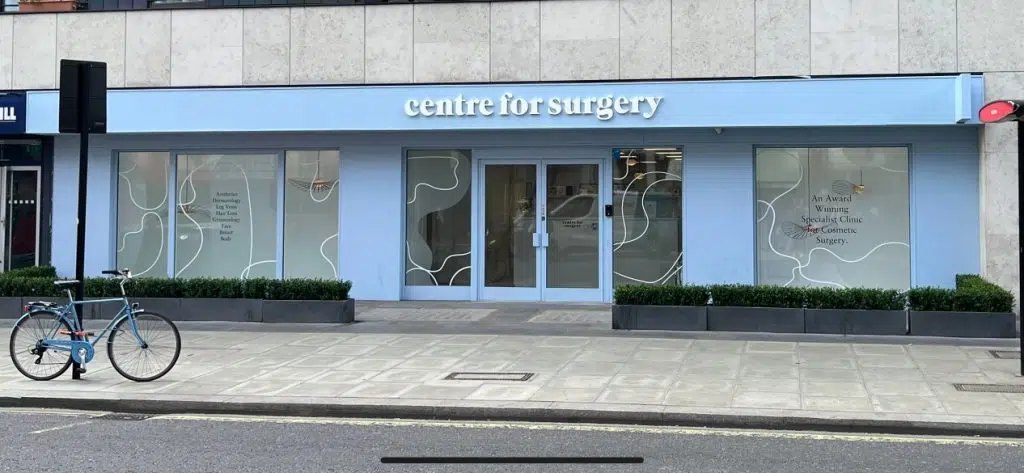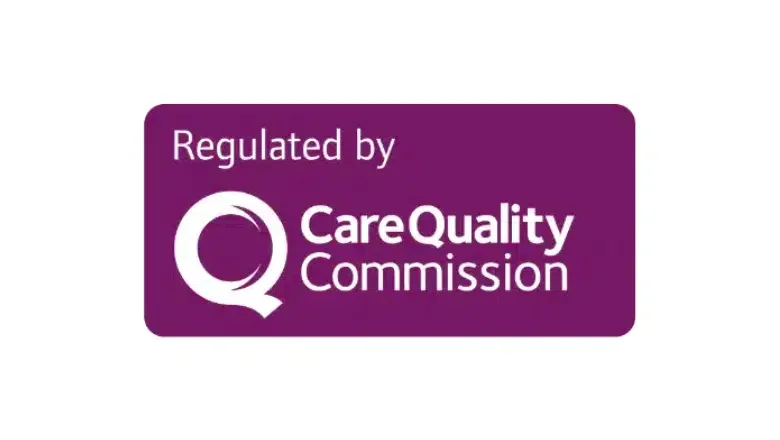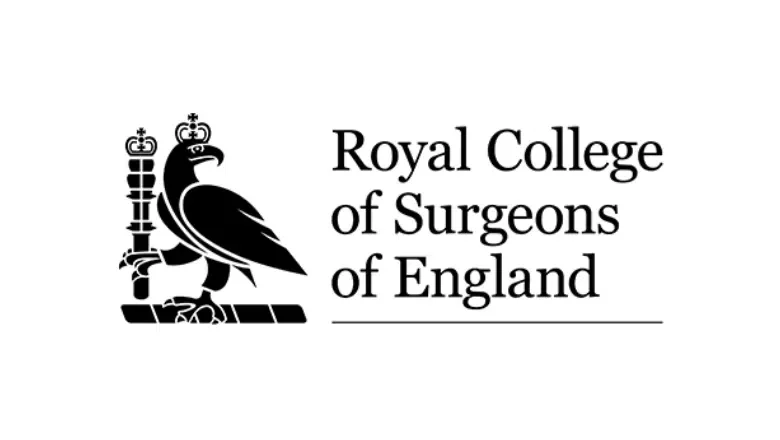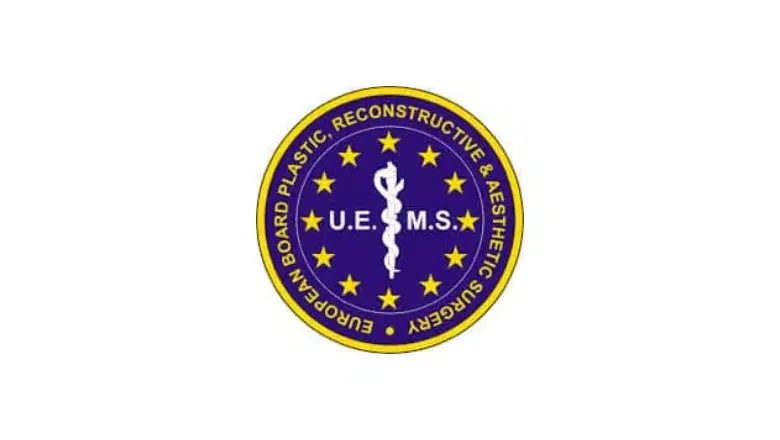A tummy tuck, also known as abdominoplasty, is a surgical procedure designed to remove excess skin and fat from the abdomen. Weakened abdominal muscles can be repaired at the same time. A tummy tuck is most commonly requested after pregnancy, significant weight loss or for those who are dissatisfied with how the stomach looks. Here at Centre for Surgery, we only work with expert plastic surgeons skilled in all types of abdominoplasty surgery. A tummy tuck is one of the top five most popular plastic surgery procedures in the UK. Its popularity is due to the impressive results that can be produced with a relatively short recovery period. Over 95% of patients who have had the procedure would recommend it to their family or friends.
RELATED:
Recovery after Tummy Tuck – Top Tips after Abdominoplasty
Benefits of a tummy tuck
- Improved appearance of the abdomen and torso.
- Ability to flatten the abdomen with muscle repair.
- Excess skin and fat are permanently removed.
- The procedure can lead to a significant boost in confidence and emotional well-being.
- Patients report increased success in forming and maintaining intimate relationships.
RELATED: What does a tummy tuck involve?
Exercise after tummy tuck
All types of cosmetic surgery, including abdominoplasty surgery, involve a period of downtime to allow proper healing to occur. Here we present an approximate recovery timeline for tummy tuck surgery. Your actual recovery time will be determined by the type of tummy tuck you have and could be shorter or longer. If you have any questions or concerns about when to start exercising, please consult with your plastic surgeon.
Week 1
Patients should take it easy during the first week and avoid any kind of strenuous activity. Light activity, such as short walks around the home, is recommended to stimulate blood flow and promote healing. You should make sure you have someone to look after you during the first few days after a tummy tuck. Maintain a healthy diet by consuming plenty of fresh vegetables and fruits. We recommend sleeping on your back during the first couple of weeks after surgery to prevent injury to the incision lines. Sleeping in a reclined position is recommended to relax the abdominal muscles.
Although it is essential to stay mobile, it is also important to avoid prolonged standing and bending. Stretching should be avoided, and you should refrain from lifting heavy objects. You must wear the compression garment as recommended for a minimum of four weeks. The compression garment’s function is to support your abdomen and allow any excess fluid to be effectively reabsorbed. Failure to wear the garment as instructed could increase the risk of seroma formation. You should take the prescription painkillers as advised by your surgeon to minimise discomfort.
Week 2
You should maintain mild exercises, but should still avoid lifting heavy objects and strenuous exercise, including going to the gym. Keep wearing your compression garment and take painkillers as required for any discomfort.
Weeks 3-4
Many forms of light exercise can be carried out, although they should not involve tensing of the abdominal muscles. Be sure to rest and avoid overexertion. Certain types of work can be recommenced, such as office work, as long as it is not too physically draining. Continue eating a nutritious diet that includes plenty of fruits and vegetables, and stay well-hydrated by drinking at least eight glasses of water daily.
Weeks 5-6
Low-intensity exercise can be resumed, including lifting very light weights of no more than 2 kg. Many exercises involving the arms and legs can be carried out safely. You can now start to go on longer walks, although you should always listen to your body. If you experience any additional pain or discomfort, this may be a sign that you are overexerting yourself. Refrain from excessive exercise if you experience any discomfort, and consult your surgeon if persistent symptoms of pain or discomfort develop.
Weeks 7-8
Most forms of exercise can be resumed, including going to the gym, although you should avoid lifting heavy weights or engaging in intense forms of exercise, such as boxing or outdoor sports. Swimming can only be restarted once your Plastic Surgeon clears you for this. You may run both outside and on a treadmill.
Week 8 and beyond
You should be able to return to the vast majority of activities by this stage. You should, however, still wait if specific exercises cause you discomfort. By three months, you can carry out any form of physical exercise, including lifting heavy weights.
Exercise after abdominoplasty
We would recommend appropriate forms of exercise after abdominoplasty to promote increased blood flow to healing areas, which ensures a quicker recovery. Exercise is one of the best ways to maintain a healthy mind and body, helping you stay motivated during the recovery period. Always follow the post-operative care instructions and refrain from strenuous exercise for at least 24 hours after the procedure. Any exercise-related injury can delay your tummy tuck recovery.
Only light exercise should be carried out in the form of short walks in the first few days after surgery. This helps to stimulate blood flow and promote quicker healing. By the end of week one, you may consider slightly longer periods of walking and light arm and leg exercises, which are permissible to help you maintain your fitness levels. If you experience any excessive pain or discomfort during exercise, you must stop and seek medical advice from your surgeon.
As the recovery phase progresses, you can gradually resume a higher number of physical activities. You should generally avoid lifting heavy weights and swimming until a minimum of six weeks after surgery. Swimming can increase the risk of wound infection if the wounds are still actively healing. Lifting heavy weights can lead to excessive stress on the incision lines and lead to wound breakdown and localised bleeding or infection.
How can I get rid of a lower belly pouch?
A tummy tuck or abdominoplasty surgery is the best way to get rid of a lower belly pouch. This area is typically characterised by excess fat and loose skin. Abdominoplasty can help flatten this area, resulting in a sculpted and contoured abdomen.
Can a tummy tuck lift the pubic area?
A tummy tuck is not designed to lift the pubic area. A mons pubis lift or mons reduction can achieve this and is commonly combined with a tummy tuck.
Can a tummy tuck help reduce my waist size?
A tummy tuck can make your waist smaller, primarily if a Brazilian tummy tuck is performed. This procedure combines liposuction of the abdomen and flanks with a tummy tuck and muscle repair. Patients can often achieve a more defined, hourglass figure with a Brazilian abdominoplasty.
When can I sleep on my side after a tummy tuck?
We would recommend sleeping in a reclined position on your back for a minimum of three weeks after an abdominoplasty. This will help control any symptoms of tightness that many patients experience after a tummy tuck. Patients can safely sleep on their side six weeks after the procedure. You should consult with your surgeon first before changing your sleeping position. If your procedure involves the removal of extra skin, your sleep position may need to be maintained in a certain way until your surgeon clears you.
Is it normal to feel tightness after a tummy tuck?
It is normal to experience a degree of tightness after tummy tuck surgery. The skin was loose and saggy, and it has now been tightened. Time is needed to help your body adjust to its new shape. The sensation of tightness will be most noticeable during the first week after a tummy tuck. It will gradually improve as the skin stretches around your new body contours. Abdominal tightness can take between one and three months to improve. You should avoid excessive bending during the first four weeks after surgery to avoid exacerbating feelings of abdominal tightness.
When can I expect to see tummy tuck results?
Tummy tuck results are most noticeable approximately three months after surgery. However, it is essential to note that it may take up to 12 months to see the final results of surgery. There may be extensive swelling during the early recovery phase, which can obscure the surgical results. Postoperative swelling is a regular part of any surgical procedure. Any postoperative discomfort can be minimised by wearing a compression garment and taking prescription painkillers as directed by your surgeon.
Is a tummy tuck permanent?
A tummy tuck is considered a permanent procedure, as the skin and excess fat have been surgically removed and cannot regrow. It is essential to note that future pregnancies, significant weight changes, and menopause can lead to skin stretching. You should try to maintain a healthy lifestyle with a good diet and regular exercise to maintain the results of your tummy tuck for the long term.
Why does my stomach still look big after a tummy tuck?
Your stomach may appear swollen after a tummy tuck during the first 3 to 4 weeks due to postoperative swelling, which can be minimised by wearing your compression garment. You should make sure to take the painkiller medication as prescribed and keep mobile to prevent bloating and constipation. If you still find your stomach appears significant after a tummy tuck, you should consult with your surgeon. Although combining liposuction with a tummy tuck can help remove excess fat, any remaining fat cells can potentially cause a swollen abdomen.
How do I get a flat stomach after a tummy tuck?
The best way to achieve a flat stomach after tummy tuck surgery is to maintain a healthy diet and engage in regular physical exercise. It is normal for swelling and bloating to be present during the early recovery period, although these symptoms typically improve over three to four weeks. You should maintain a high intake of lean protein and plenty of water, and rest as much as possible to ensure proper healing and recovery. This will help to provide a quick recovery. Certain types of exercises may be recommenced once your surgeon has assessed you.
When can I work out after a tummy tuck?
Patients can start light exercises approximately 7 to 10 days after a tummy tuck. After six weeks, you can return to most forms of exercise. Strenuous exercise, including lifting heavy weights, should be avoided for at least 12 weeks. Suppose you have not had muscle repair as part of your tummy tuck. In that case, you may restart strenuous exercises earlier and consult with your surgeon to determine the appropriate timing for this.
How long can I walk after a tummy tuck?
Mild and gentle forms of walking are recommended 3 to 4 days after surgery to promote blood flow. You should not engage in any form of exercise immediately after your surgery or the day after. Light walks around the home are recommended after the first two days, although it is best to avoid walking long distances during the first week after tummy tuck surgery.
RELATED: How to Walk After A Tummy Tuck
When is it safe to stretch after a tummy tuck?
Stretching exercises should be avoided for at least four weeks as your body needs to heal adequately. Placing excessive strain on healing incision lines could lead to wound breakdown if you stretch too early after surgery. Make sure to rest plenty after abdominoplasty surgery. Avoid carrying out any exercise that is excessively strenuous, including stretching exercises. Your surgeon can advise you when it is safe to restart stretching exercises.
When can I do squats after a tummy tuck?
Most forms of gentle leg exercises are allowed during the first four weeks after a tummy tuck. You should avoid any resistance exercise with heavier weights. If you experience any pain or discomfort, stop the exercise immediately and consult your surgeon for a clinical assessment.
When can I walk on the treadmill after a tummy tuck?
You should be able to start cardiovascular exercise approximately six weeks after having a tummy tuck once you have healed sufficiently. You should avoid excessively long or strenuous workouts. The exercise aims to help blood circulation to the healing areas. Your energy levels may still be low, and it is essential not to do too much too soon.
When is the best time to do sit-ups after a tummy tuck?
It is best to avoid any core strengthening exercises for at least three months after a tummy tuck. Core exercises can increase the risk of complications developing, so it is best to avoid placing any pressure on your abdominal muscles, especially if you have undergone muscle repair.
How can I tone my stomach after a tummy tuck?
Core strengthening exercises should be avoided for at least six weeks after surgery. Your surgeon will advise you when you can safely start abdominal strengthening exercises after a tummy tuck. If you overdo it with abdominal crunches, you may disrupt the abdominal muscle repair, potentially requiring corrective surgery later.
Can stomach fat come back after having a tummy tuck?
Once fat cells have been surgically removed as part of a tummy tuck, they do not come back. However, if you continue to eat in excess with minimal exercise, existing fat cells can become enlarged, leading to weight gain. This is why we recommend eating a healthy and balanced diet, along with regular exercise.
How can I prevent gaining weight after a tummy tuck?
It is essential to maintain a healthy diet and drink plenty of water to stay hydrated. Regular exercise helps maintain a healthy weight and tone your muscles. This will help to enhance the results of a tummy tuck. It is vital to follow all of your surgeon’s post-operative instructions. To avoid gaining excess weight after a tummy tuck, it is essential to maintain a healthy diet, drink plenty of water, and engage in regular physical exercise.
What to consider before getting a tummy tuck
At Centre for Surgery, we believe that choosing the right clinic and surgeon is crucial to achieving the best outcomes after a tummy tuck. Here are some key factors to consider when making your decision:
Research
It is essential to conduct thorough research when selecting a clinic for your tummy tuck surgery. Look for a well-established and reputable clinic that specialises in cosmetic surgery. At Centre for Surgery, we have been providing cosmetic surgery services for many years. Our patient coordinators and surgeons are always available to answer any questions you may have and provide you with the right information.
Qualifications and Experience
Your choice of surgeon should be based on their qualifications, experience, and record of good patient feedback. You should know who will be performing your surgery before your consultation. At Centre for Surgery, we have a rigorous appointment process to ensure that our surgeons have the right skill set to perform cosmetic surgery. You can read more about our doctors on our website.
Safety and Regulation
It is crucial to ensure that you undergo your tummy tuck surgery in a safe and regulated environment with staff who are fully trained and caring, to look after your needs before, during, and after the procedure. Do not base your decision solely on price, as a lower price may come at the expense of quality and safety.
Avoid a Hard-Sell Approach
Avoid clinics that offer a “hard-sell” approach. If something sounds too good to be true, it probably is. At Centre for Surgery, we prioritise patient safety and satisfaction as the bedrock of our reputation as an ethical provider of cosmetic surgery. Our doctors are renowned for providing straightforward and honest advice, and you can be assured that your journey with us will be a positive experience on the path to achieving renewed self-confidence.
Why choose Centre for Surgery for a tummy tuck?
Centre for Surgery is renowned for expertise in tummy tuck and abdominoplasty surgery. This procedure effectively removes excess skin and fat from the stomach. Patients can achieve a flat stomach with a contoured appearance. Call us on 020 7993 4849 to schedule a tummy tuck consultation at our Baker Street clinic in Marylebone.
RELATED: How much does a tummy tuck cost?
Medical references
- Tummy Tuck Recovery: What to Expect – Healthline
- Tummy Tuck | Patient Guide – The American Board of Cosmetic Surgery










